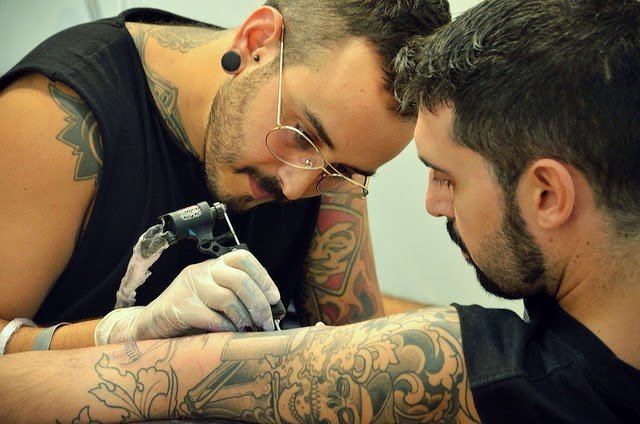Start Thinking Like a Tattoo Artist
Many people think that tattooing is no different than drawing on skin, but that’s not true. There are some important overlapping skills, but being a tattoo artist is not the same as being a sketch artist.
A good tattoo artist uses the best tattoo supplies from Kingpin Tattoo and develops a strong eye for shape, color, and line work. I am going to give you some exercises that will help you regardless of the type of art you want to do. In this article, you’ll find information about…
- How to improve your line work.
- How to get used to drawing on the body.
- Getting comfortable with the ink and color and understanding how it interacts with skin.
- Using books and other references to expand your knowledge.
- How to practice tattooing.
- Instructions for designing your own tattoos.
- Information about finding a tattoo apprenticeship.
1. Improve Your Understanding of Line
Don’t shade anything at first, just concentrate on making strong lines. Draw in pencil everyday. Draw the things that are around you as exactly as possible. Tattoos are very much defined by the line, so get used to thinking about the things you draw as being made up of a collection of lines. Push yourself to draw increasingly complicated things, such as the pattern of brick on a building, wallpaper, or designs from clothing. Keep these drawings in a folder.
How to Practice Your Line for Tattooing
- Once you have 10–12 finished pencil line drawings, get a medium-tip pen.
- On a glass table or a window, place a clean sheet of paper over your drawing and ink all of your lines. You are trying to make your lines as clean (not wobbly) as possible.
- Compare your original pencil drawing with the inked version. You will notice that many of the intricate details bleed together.
- Repeat the pencil and ink process again. Over time, you will find that your choice of lines, your inking, and your ability to draw in strange positions will improve.
2. Get Used to Shape
Once you’ve mastered lines, move on to visualizing how those lines and shapes change when they are applied to a surface that isn’t flat.
How to Practice Drawing 3D on the Body
- Start by using a coffee cup or some other curved container. Ink your drawings directly on to the surface of the cup with your medium-tip pen. Keep practicing until your lines are as good on a curved surface as they are on a flat paper.
- After you feel comfortable with this, get some wide masking tape and tape a body part, placing each strip of tape right next to or slightly overlapping another strip to form a wide area to practice on. Then use a medium-tip pen to lay your lines down.
- Notice how the image looks from various angles and how the body part changes the appearance of the image.
- Continue this practice and observation on many different body parts—yours and friends’.
3. Pick Up Some Markers
Pick up a basic set of Prismacolor or Copic markers. These are some nice quality markers that you can use to practice more color combination and separation. Keep practicing until you can do an intricate pattern or picture on a coffee cup with clean lines.
4. Get Comfortable With Color
Getting a good sense of color for tattooing is going to be a major plus. Not only do you have to understand what a color will look like when it mixes with flesh tones, you need to get good at picking and separating colors.
















